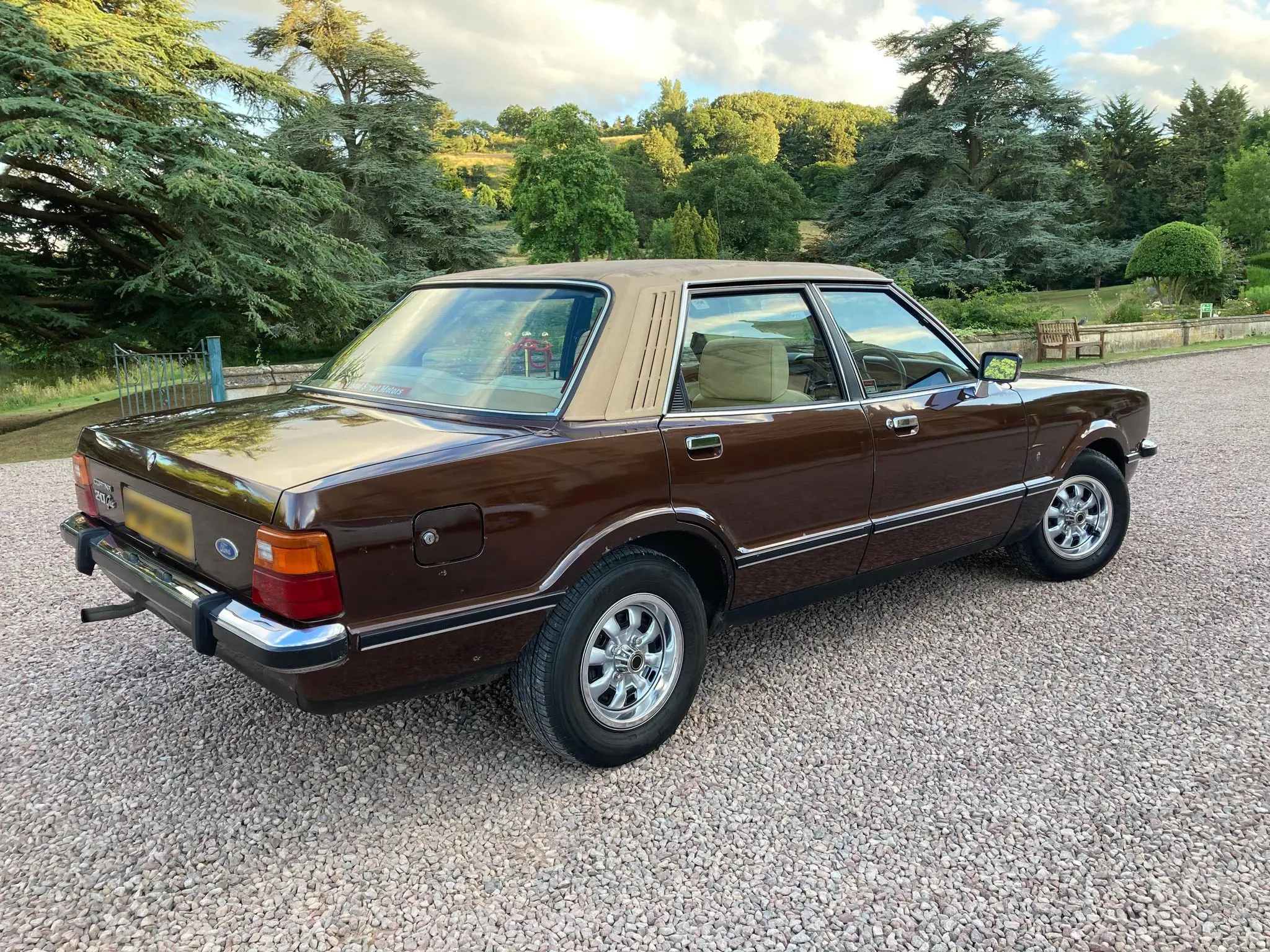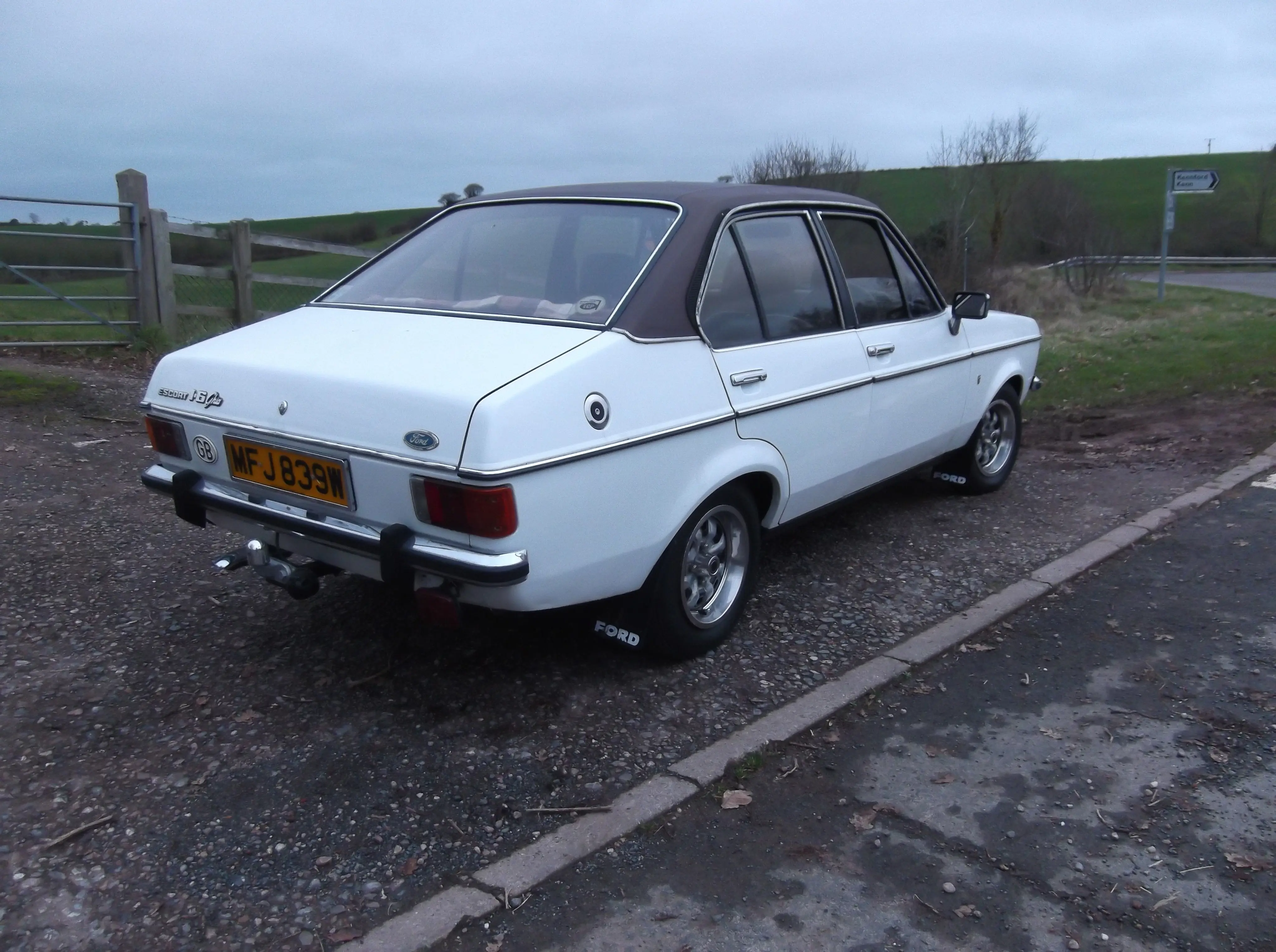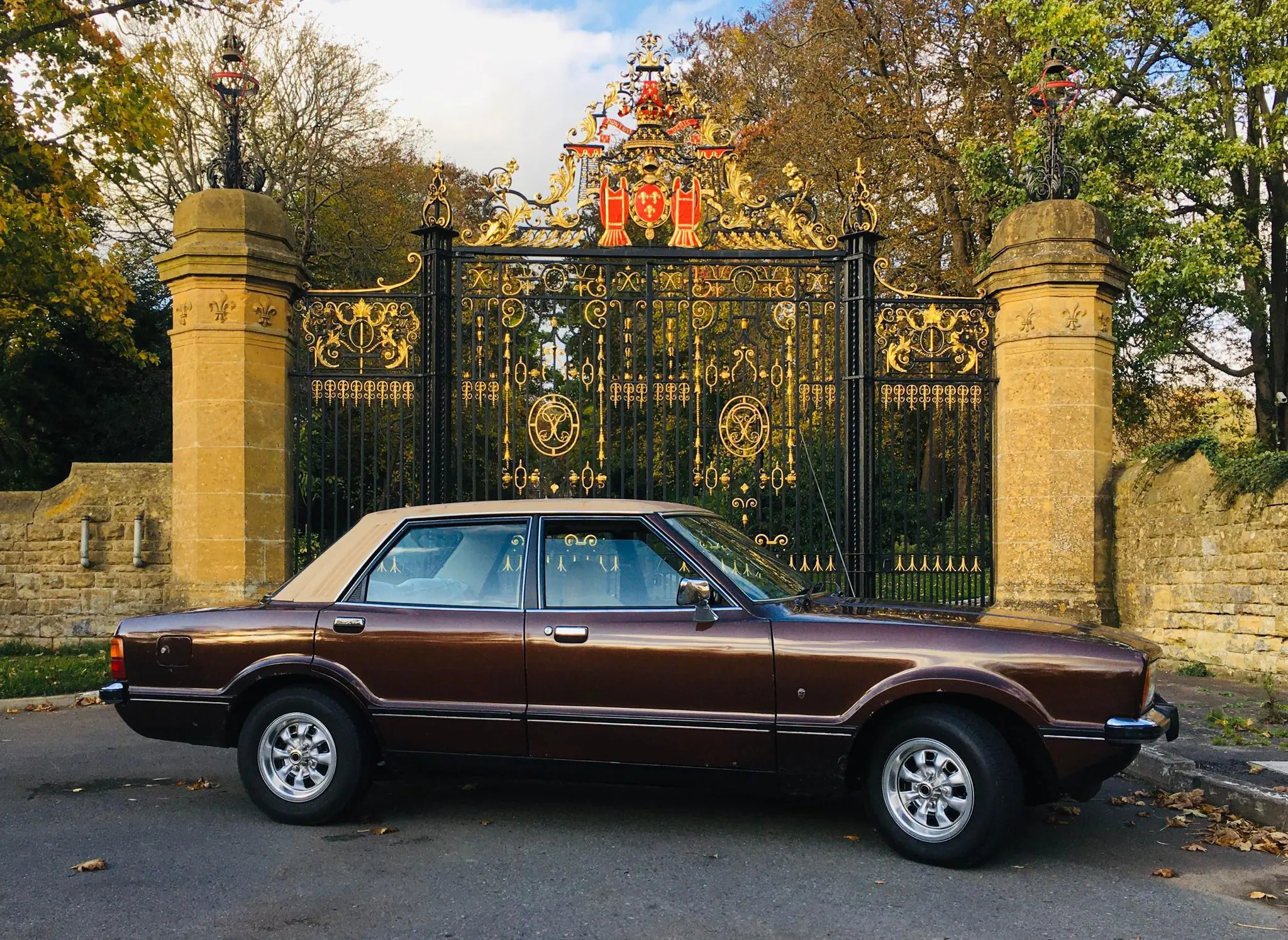MEET THE OWNER – NEIL GRUBB AND HIS FORD CORTINA GHIA MK. IV
13 September 2023
Around 47 years ago, Neil Grubb’s father was a devotee of British Leyland and had recently taken delivery of a Princess 2200 HLS. However, another new car even more impressed his ten-year-old son: “My dad had just built a house and sold it to a chap with a Cortina Ghia – he wore 1970s flared trousers, and his wife had a ‘Purdey’ hairdo. I loved their new house and their new car – they were both so very ‘1976’. I remember that Ghia as though it was yesterday, and I always dreamed of owning one myself.”
And today, Neil revels in his Cortina’s ‘Roman Bronze’ magnificence. The original owner ordered his Ghia on 13 April 1977 from Bristol Street Motors of Alvechurch. The price was £2,992.24, less a £374.11 discount for a cash payment. He also specified the optional sliding roof for £87.10 and ‘full rustshield’ for another £50.

Ford introduced the Cortina Mk. IV in September 1976, several months after its Taunus TC2 German counterpart. The platform, wheelbase, suspension and running gear were much the same as the Mk. III, but Uwe Bahnsen’s styling looked up-to-the-minute. The new Cortina was ideal for a brave new world of bomber jackets and Harp lager in slim glasses. It was the UK’s best-selling car from 1977 to 1979, and Tony Bastable of Thames Television’s Drive In predicted it would be a winner - Ford Cortina Mk IV | Retro Car review | Ford Cortina | Drive in | 1976 - YouTube
One talking point was that the top-of-the-range Cortina wore ‘Ghia’ rather than ‘E’ – ‘Executive’ badging. Ford GB started using the Italian design house’s logo for their flagship models in 1974, and two years later, the shield badge had come to denote managerial status. As a result, Ford capitalised on the fleet sales market, and Autocar thought the latest Cortina was “a car that drivers will readily take to, and that in itself (let alone several other virtues) will make the salesman’s job an easy one”.
In addition, the elaborate line-up of Cortina Mk. IV variants meant vehicles for every grade of employee. The junior representative merited a two-door 1300 ‘Standard’, where the brochure was reduced to highlighting “black grained facia finish” and “illumination for rear number plate” as sales features. Seniority might result in an ‘L’ (halogen headlamps and reclining front seats) and a ‘GL’ (quartz clock, rear centre armrest and push-button radio). The latter was the most popular member of the Mk. IV line-up.

Finally, after many years of hard work, they would finally be assigned to the district manager’s ‘Ghia’. Here was “Luxury in a car that’s built to last”, with tinted glass and a remote-control driver’s door mirror as standard. Equally importantly, the vinyl roof, wood veneered fascia and “‘Crushed Velour’ with ‘Verona’ inserts” upholstery helped it stand out in the company car park. The sliding roof on the Grubb Ghia was an extra that Ford made available after a survey of company car drivers showed it was one of the most popular accessories.
Your local Ford Fleet Sales Manager would probably also point out that the Cortina 2.0-litre Ghia had no direct British rivals. The Morris Marina 1.8 HL never had quite the same social cachet, and Vauxhall would not offer the Cavalier 2000 GLS Mk. I until 1980. The Fiat 132 GLS was very nicely appointed and cost only £2,725, but few fleet buyers would have considered a foreign-built company car.

The Cortina 80, aka the Cortina Mk. V replaced the Mk. IV in late 1979. Nearly 45 years later, Neil finds his Ghia more than lives up to his dreams, finding the 2-litre engine very smooth and the paint finish extremely smart. Looking at the Cortina today, it is hard to believe it spent many years in a garage after its first owner’s health forced him to give up driving in 1987. Today, Neil is proud of owning, to quote Ford, “one of the most practical and luxurious cars in Europe”. Plus, his Ghia really does look as though it belongs in the Ford brochure for 1977.
With thanks to: Neil Grubb.
